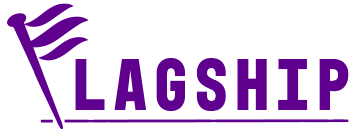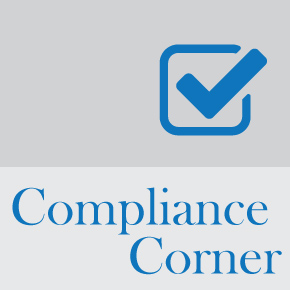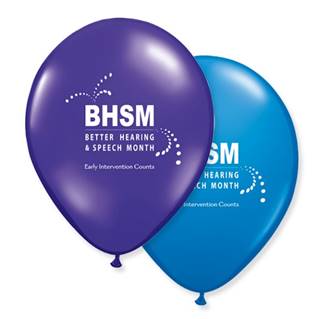Congratulations to our 3rd Quarter recipient of the SPARC award, Cindy Syrovatka! Cindy is an OT Student at The University of South Dakota, and will graduate in December 2015. Her inspiration and drive for occupational therapy stems from the  example and guidance of peers, family and educators she has experienced. Read her story below, and we think you will agree she is a most deserving recipient of our support.
example and guidance of peers, family and educators she has experienced. Read her story below, and we think you will agree she is a most deserving recipient of our support.
Cindy’s Essay
A devoted 65-year-old rural farmer with Scleroderma and Type II Diabetes returned to his hospital room after a surgical procedure. The kind gentleman’s comorbid diseases were worsening, and therefore the physician decided to surgically remove all of the farmer’s toes on both feet. The doctor told the farmer he would never be able to walk again. The farmer understood the procedure had to be done, but since he was a dedicated farmer, he worried he would not return to daily farming with his son. The farmer was able to go home with home health services after a few nights stay. Luckily, the farmer had a supportive family who lived nearby, of which one 12-year-old granddaughter invested her time in helping her grandparents daily as needed. The farmer explained to his granddaughter how sad he was that he was not going to be able to walk anymore, which meant he wasn’t going to be able to get in the shower alone, make supper, or get a glass of water, but more importantly, wasn’t going to be able to complete any farming activities. The passionate farmer had tears in his eyes while talking to his granddaughter and depression set in over time. Then, one day, while the granddaughter was at the farmer’s house, a lady came in to the home for an appointment saying she was an “OT.” The lady proceeded to tell the farmer and his granddaughter how she was an occupational therapist and was there to help him find a way to complete his daily tasks as independently as possible. The farmer looked up at the lady and said, “it doesn’t matter what I can do, I just want to be able to farm.” The occupational therapist took this statement as a challenge. The farmer was doubtful that an occupational therapist could help him, but he was determined and worked hard during therapy. Week after week the occupational therapist came to the house to work with the farmer, and the granddaughter observed and participated in as many sessions as possible. With the occupational therapist’s devoted time, passion to help people improve their daily lives, and education and training on ways to modify or adapt tasks, the farmer was able to complete his daily activities independently in a new way. Now, the farmer could independently get in and out of the shower with the help of durable medical equipment, utilize equipment to get dressed, get a glass of water, and most importantly, was able to utilize an automobile four-wheeler with adaptive methods to complete some farming activities once again. The farmer was so delighted and thankful for the occupational therapist’s help.
Even though the farmer was told he would never walk again, he was motivated and devoted, and achieved much more in his life. He even verbalized to his granddaughter and therapist that he had a better quality of life and felt he had a purpose to live. Not only did the therapist spark and motivate the farmer, but the granddaughter as well. The granddaughter knew that someday she wanted to be able to enrich the lives of all individuals, just like the occupational therapist did for her grandfather. Today, the granddaughter is completing her fieldwork clinical experience using her education, training, and her grandfather’s story to help motivate others as well as identify ways to help all individuals engage in meaningful occupations in order to improve their daily living skills. The granddaughter in the story… is me.
As an occupational therapy student and future occupational therapist, I envision using my education and training to advocate and spark my patients and all individuals about the importance of occupational therapy, what it is, what it can do, but most importantly what it can help individuals do in their lives. I visualize myself using evidence-based interventions, to continue learning, being an accountable therapist, and advocating for the best interest of my patients.
I decided I wanted to be an occupational therapist because I have a passion for helping individuals gain the ability to be as independent as they can as well as helping them engage in meaningful daily activities. As a student, I’ve developed a passion to learn what specific interventions and strategies truly help each individual improve their skills. Learning evidence based strategies helps me during my level-two-fieldwork placement that I am currently completing, and will continue to benefit me as a therapist. During my therapy sessions, I strive to utilize evidence based practice techniques and educate my patients on the success of these strategies. Throughout my school years, I have participated in various research opportunities that help demonstrate my passion for learning. Currently, I am working on an evidence based systematic review focusing on the interventions that modify, establish, or maintain occupations of adults living with dementia or other related disorders. My passion for learning helped me strive to not only complete the difficult school work and time associated with graduate school, but also an additional time consuming task of completing extra research. Therefore, I have already started utilizing evidence-based practices into my daily routine with patients, and I envision myself to continue completing research during my career and keep it as an important aspect of my own daily routine. My dedication to enhancing my patient’s well-being not only links to my passion for utilizing evidence based practice, but my understanding that everyone is different and unique in their own way. Knowing that everyone is different reminds me that not all interventions are appropriate or successful with all individuals. I will need to continue learning not only from textbooks, but from my patients in order to learn what intervention strategies are successful for each patient specifically. Being client-centered will help me find and ignite each individual’s own spark to believe in themselves, improve their abilities and engage in meaningful occupations.
My desire to be client-centered with my patients will help me establish accountability with them as well as my employer. My education and training has helped me gain the ability to establish rapport with patients and coworkers. I will demonstrate accountability with my patients by providing them with the skilled services I have gained from my education and training. I will be held accountable as a professional by ensuring that I am up to date with research and new therapy practices and technologies. My accountability as a therapy professional will benefit my employer in regards to being able to perform successfully, clinically, and culturally with all patients, as well as increase success rates and patient caseloads for my employer. Essentially, my provider will be able to hold me accountable to provide adequate safe care to my patients, be well educated and trained to make appropriate clinical judgments and complete documentation appropriately. I will also practice client-centeredness, provide just right challenges for my patients, and be able to establish an appropriate level of revenue.
As mentioned previously, I envision my future self to be efficient at documentation skills and I understand the value and importance of documentation. However, with this said, if I had freedom from corporate limitations in healthcare, I would attempt to have all therapists complete more one on one time with their patients and less time solely completing documentation. To allow for these changes, productivity rates may need to be lowered at first and overall documentation amount may need to be reduced. Essentially, I would educate therapists on the importance of documenting more efficiently and to have more one on one time with their patients instead of alone documentation time. I will train therapists to complete their paperwork while they are educating patients on various topics such as their personal goals. I believe that by completing documentation while with the patients, this will help keep the therapists more goal oriented during treatment, as well as keep the patient up-to-date on their progress overall. Providing more one on one care is a valuable component that I hope to establish in my treatments.
I, as a current occupational therapy student and future occupational therapist, will attempt to utilize evidence-based practice, continue to learn, be an accountable therapist, and advocate for the best interest of my patients. My occupational therapy education, training, passion, and values, will help individuals, such as the rural farmer, overcome barriers and engage in meaningful occupations to improve their daily living skills
Cindy’s Service and Volunteer Activities
The University of South Dakota has provided me with various involvement opportunities where I have been able to service others and volunteer. Specifically, as part of the University of South Dakota’s Occupational Therapy Club, I have gratefully been given opportunities to help increase the quality of life for numerous people through my dedicated service. For example, I served as the 2014-2015 University of South Dakota Occupational Therapy’s Institute of Health Care Improvement (IHI) representative where I was able to meet with other healthcare disciplines and discuss ways to promote and advocate for healthcare. We, as an organization, advocated for healthcare in various ways such as displaying movies about healthcare for community members or students to attend, and created and dispersed handouts about healthcare. I also participated in a panel for USD’s pre-occupational therapy club where I advocated for occupational therapy by sparking students’ interest towards the field as well as general knowledge about occupational therapy. I have also completed numerous phone and email interviews for high school students who were interested in an occupational therapy career. In these interviews I explained what occupational therapy is and how important it is to health care. I have volunteered my time for Vermillion, SD’s Community Health and Wellness Fair, Meals on Wheels, played Wii at an assisted living community residence in Vermillion, and provided faculty supervised occupational therapy treatments to a community member in need. Additionally, I have volunteered my time at a local backpack program where food was gathered, bagged, and then sent to schools to be dispersed to lower social economic status school-aged children to ensure the they would have adequate food to eat during the weekend. During my time as an occupational therapy student, I donated to local book drives to help disperse books to children in need. I also donated to Special Olympic programs. Lastly, as a student, I was given the opportunity to implement a program at a rural long-term care center to help improve leisure participation in older adults. These volunteer and service activities have helped me advocate for a career field I love as well as obtain a more diverse appreciation for all different people. Gratefully through these activities mentioned previously, I was able to provide opportunities for individual’s to be involved in activities and improve or enhance their participation in enjoyable activities.
Poster Presentations
Research Involvement
- Systematic review (January 2014-present): Currently co-author/researcher completing a systematic review through the American Occupational Therapy Association, focusing on interventions designed to establish, modify, and maintain occupations for adults with Alzheimer’s disease and related disorders.
- Presentation speaker at 2015 National AOTA Conference in Nashville, TN: Systematic Review on Occupational Therapy and Alzheimer’s Disease and Related Disorders
- Presentation speaker at 2015 University of South Dakota School of Health Sciences Research Day: Systematic Review on Occupational Therapy and Alzheimer’s Disease and Related Disorders • Presentation speaker at 2015 University of South Dakota Occupational Therapy Research Symposium: Impact of Tablet Technology Use on Social Isolation Among Older Adults: A Pilot Study
- Biochemistry Lab Technician at South Dakota State University (October 2011-May 2012): Aided researchers in cardiac testing and performed basic lab functions such as making transparent gels
Poster Presentations/Critically Appraised Topic Presentations:
- Effectiveness of Pet Assistive Intervention to Help Improve Social Participation in School-Aged Children with Autism
- The Effectiveness of Early Mobilization within 1 week of a proximal humeral fracture compared to immobilization for 3 or more weeks for decreasing pain levels in adults aged 40-85
- The Effectiveness of Behavioral/Cognitive Behavioral Strategies in Facilitating Transition to Supportive Employment Compared to Less Directive Client-Centered Strategies with Adults Diagnoses with Schizoaffective Disorder
- Effectiveness of Sensory Integration with School Aged Children with Disabilities
About SPARC
Ensign Therapy SPARC (Scholarship Program And Recognition Campaign) is inspired by its namesake and the sense of liveliness and excitement that therapy students and new graduates bring to our facilities and in-house therapy programs. With this scholarship program, we are deliberately seeking out those individuals who ignite a desire for excellence in themselves, their patients, their colleagues and co-workers.








 Annual limitations on per beneficiary incurred expenses for outpatient therapy services under Medicare Part B are commonly referred to as “therapy caps.” All beneficiaries began a new cap year on January 1, 2015, since the therapy caps are determined on a calendar year basis. For physical therapy (PT) and speech-language pathology services (SLP) combined, the limit on incurred expenses is $1,940 in 2015. For occupational therapy (OT) services, the limit is $1,940 in 2015. Deductible and coinsurance amounts paid by the beneficiary for therapy services count toward the amount applied to the limit.
Annual limitations on per beneficiary incurred expenses for outpatient therapy services under Medicare Part B are commonly referred to as “therapy caps.” All beneficiaries began a new cap year on January 1, 2015, since the therapy caps are determined on a calendar year basis. For physical therapy (PT) and speech-language pathology services (SLP) combined, the limit on incurred expenses is $1,940 in 2015. For occupational therapy (OT) services, the limit is $1,940 in 2015. Deductible and coinsurance amounts paid by the beneficiary for therapy services count toward the amount applied to the limit.





